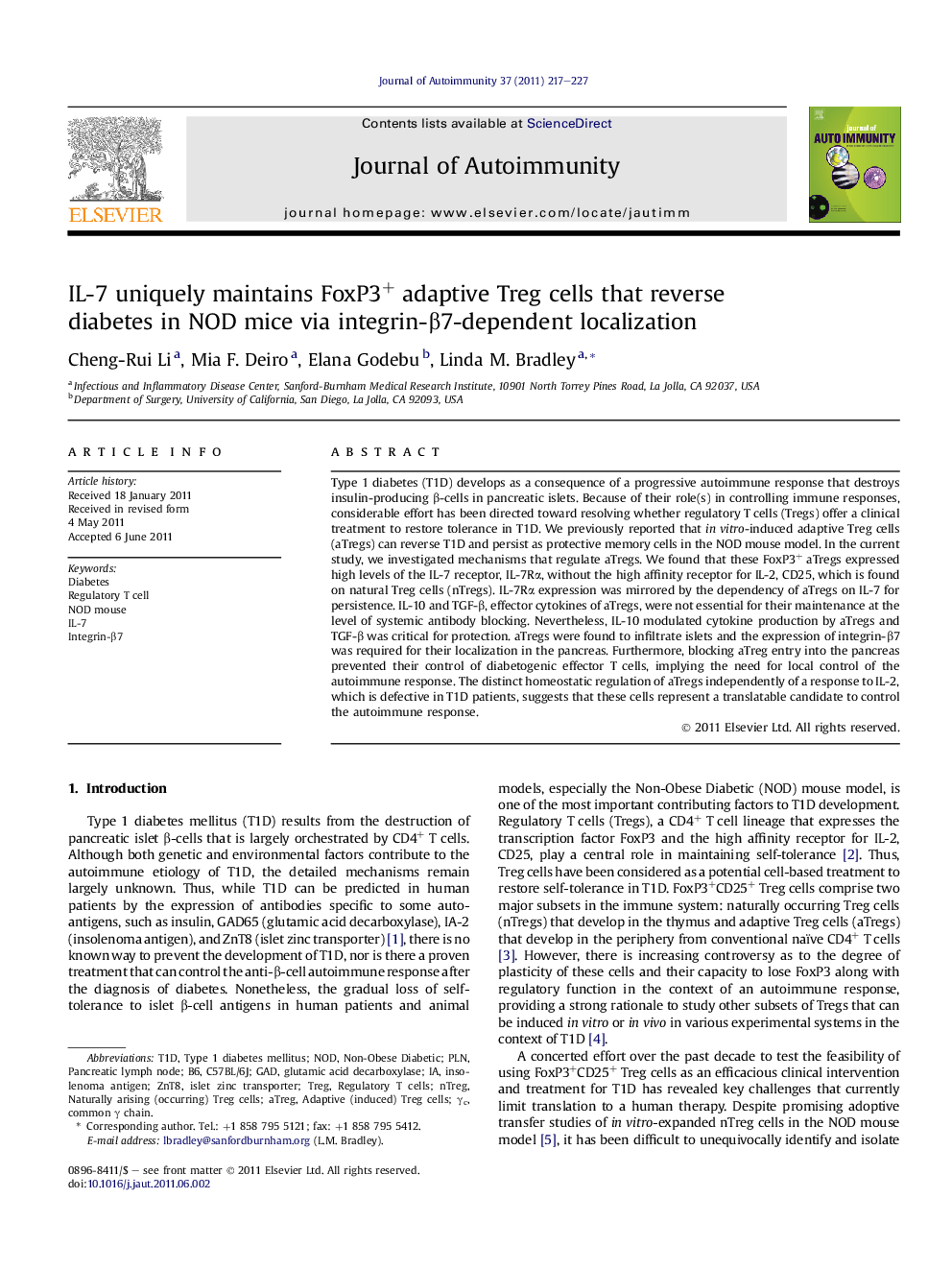| Article ID | Journal | Published Year | Pages | File Type |
|---|---|---|---|---|
| 3368013 | Journal of Autoimmunity | 2011 | 11 Pages |
Type 1 diabetes (T1D) develops as a consequence of a progressive autoimmune response that destroys insulin-producing β-cells in pancreatic islets. Because of their role(s) in controlling immune responses, considerable effort has been directed toward resolving whether regulatory T cells (Tregs) offer a clinical treatment to restore tolerance in T1D. We previously reported that in vitro-induced adaptive Treg cells (aTregs) can reverse T1D and persist as protective memory cells in the NOD mouse model. In the current study, we investigated mechanisms that regulate aTregs. We found that these FoxP3+ aTregs expressed high levels of the IL-7 receptor, IL-7Rα, without the high affinity receptor for IL-2, CD25, which is found on natural Treg cells (nTregs). IL-7Rα expression was mirrored by the dependency of aTregs on IL-7 for persistence. IL-10 and TGF-β, effector cytokines of aTregs, were not essential for their maintenance at the level of systemic antibody blocking. Nevertheless, IL-10 modulated cytokine production by aTregs and TGF-β was critical for protection. aTregs were found to infiltrate islets and the expression of integrin-β7 was required for their localization in the pancreas. Furthermore, blocking aTreg entry into the pancreas prevented their control of diabetogenic effector T cells, implying the need for local control of the autoimmune response. The distinct homeostatic regulation of aTregs independently of a response to IL-2, which is defective in T1D patients, suggests that these cells represent a translatable candidate to control the autoimmune response.
